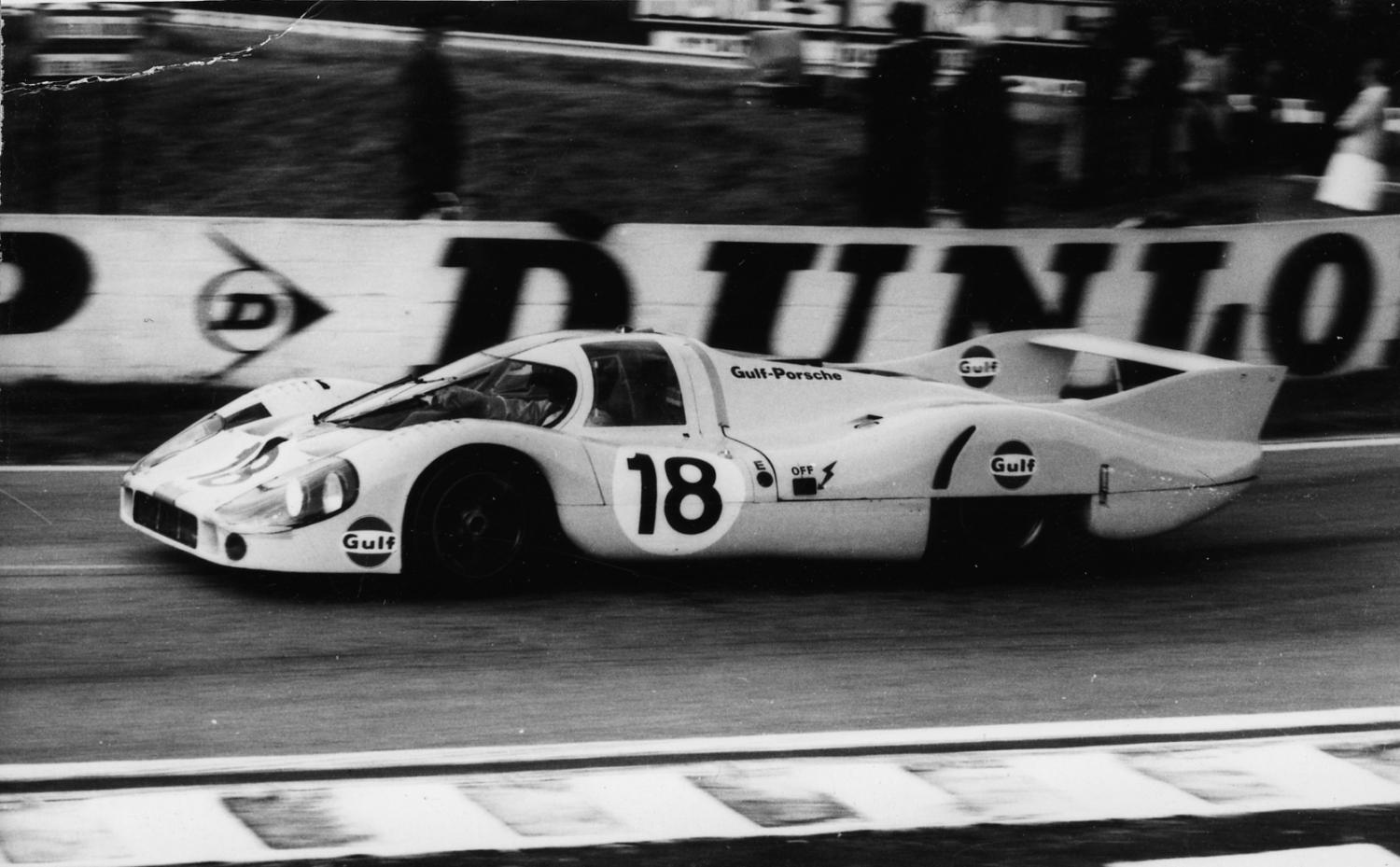In 1969, John Wyer and his team triumphantly concluded the Ford GT40's adventure at the 24 Hours of Le Mans, started in 1964 and boasting four consecutive wins from 1966 and 1969 (two with Carroll Shelby, two with Wyer). A new glorious chapter began when John Horsman (John Wyer's technical director) and a team of engineers traveled to Austria to take part in a testing session with the Porsche 917.
The car's first appearance in the 24 Hours of Le Mans, in 1969, made a big impression. On the positive side, performances as yet unseen at Le Mans. On the negative side, a recurring problem in road handling road which demanded truly top notch drivers. British driver Vic Elford wrote about the 1969 version 917 as follows: "The Mulsanne Straight wasn't wide enough to get the car to run straight!"
John Horsman managed to solve the major flaw thanks to significant modifications at the rear of the car. By picking John Wyer as a partner, Porsche had chosen well: Gulf climbed even higher in 1970 and 1971.
However, despite 11 wins in the World Marques Championship in 1970 and 1971, the Porsche 917 in the sky blue and orange livery never won at the 24 Hours of Le Mans. In 1970, John Wyer's three 917 Ks (short body) were forced to retire. A new version of the 917 appeared in 1971 (called LH for "langheck" or longtail in German). First trepidatious, John Wyer was eventually convinced to enter two cars via exceptional performances.
Within two months, the Porsche 917 LH had established two records at the 24 Hours of Le Mans: first at the initial free practice sessions in April with a top speed of 386 km/h for British driver Jackie Oliver, winner in 1969; then, two months later in qualifying, 1968 winner Pedro Rodriguez clocked pole position in 3:13:9 at an average of more than 250 km/h.
Yet, John Wyer's doubts were confirmed in-race: the two 917 LHs of Rodriguez-Oliver and Siffert-Bell were forced to retire. Only the team's third car, short body driven by Herbert Müller-Richard Attwood, made it to the checkered flag, in second place behind the other 917 K of Helmut Marko-Gijs van Lennep (Martini Racing).
The Porsche 917 Gulf's only victory at the 24 Hours of Le Mans would end up being...the stuff of Hollywood, thanks to Steve McQueen and his movie "Le Mans" produced by the actor and filmed during the 1970 edition. The sky blue and orange 917 even achieved a one-two for Paul-Jacques Dion (played by French actor and stuntman Jean-Claude Bercq) and Michael Delaney (played by Steve McQueen).
By the end of 1971, the CSI (Commission Sportive Internationale, predecessor to the current Fédération Internationale de l'Automobile) had discarded the Sport class, in which the 917 competed, for prototypes limited to three cylinders.
The change would lead John Wyer and Gulf to Mirage chassis, for the final installment in this saga, to be continued!
Click below for the first installment in this series:
Gulf 1967-1975 (1) - The Ford GT40 years
Photo: The two records (speed in the Mulsanne Straight and pole position) established in 1971 by the Porsche 917 LH remained unbeaten until 1988 and 1985, respectively.

